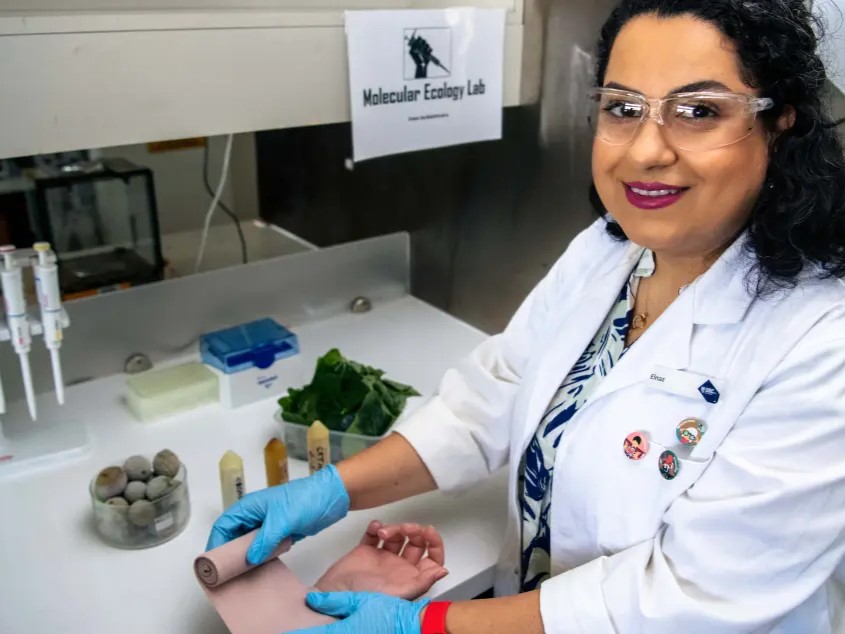As a doctoral candidate, lead author and CDU Faculty of Faculty of Science and Technology member Elnaz Saki explored the potential of Calophyllum inophyllum seed oil (CSO) and Tinospora smilacina leaves water extract (TSWE) as alternative sources of medicine in two separate studies.
In the first study, Dr Saki explored the wound-healing potential of CSO after turning it into a nanoemulsion, a mixture of liquids with a nano-sized droplet of oil. The second paper studied the impact of adding TSWE to the CSO nanoemulsion.
“The study has shown that CSO and TSWE contain bioactive compounds such as flavonoids and fatty acids, which have potent wound healing, antimicrobial and antioxidant effects,” Dr Saki said.
“Both nanoemulsions demonstrated an improvement or equivalent activity for biomedical applications such as wound healing, antimicrobial and antioxidant effects.”
Dr Saki’s extensive interest in the diversity of plant species and their unique chemical compounds inspired her to pursue medical biotechnology, nanobiotechnology and nanomedicine.
She chose to work with C. inophyllum, also known as Alexandrian laurel, and with T. smilacina because of their historical use in traditional medicine and bioactive compounds. CSO has been used to treat skin diseases, wounds and pain while T. smilacina, commonly called snake vine, has long been used to treat snake bites, headaches, rheumatoid arthritis and other inflammatory disorders.
“These plants represent a rich source of bioactive compounds that have not been fully explored regarding their potential therapeutic applications,” Dr Saki said.
“With the increasing demand for sustainable and eco-friendly solutions in the pharmaceutical industry, I recognised an opportunity to contribute to this field by investigating the bioactive properties of plant extracts.”

Calophyllum inophyllum (Alexandrian laurel) tree with green fruit. The seeds of this plant have been used as a treatment for various conditions including skin diseases, wounds and pain. Credit: Shutterstock
Dr Saki, who recently graduated with a PhD in Nanobiotechnology, hopes to continue her research and explore how these bioactive compounds work in vitro and in vivo.
“I am also interested in exploring the potential of these compounds to be included in novel therapies for various diseases, including anti-cancer, anti-inflammation, multidrug-resistant and infectious diseases,” she said.
“I am interested in partnerships with pharmaceutical, bioceutical and cosmetic companies interested in developing and synthesising new nanomedicine and therapies.”
The first study, ‘Optimisation of Calophyllum inophyllum seed oil nanoemulsion as a potential wound healing agent’, was published in the journal BMC Complementary Medicine and Therapies.
The second study, ‘Formulation and Biomedical Activity of Oil-in-Water Nanoemulsion Combining Tinospora smilacina Water Extract and Calophyllum inophyllum Seeds Oil’ was published in the journal Clinical, Cosmetic and Investigational Dermatology.
This article was initially published on the Charles Darwin University news page in June 2023 and has been republished here, with minor editorial modifications, courtesy of the CDU media team. View the original article. https://www.cdu.edu.au/cdu-uni-news/all-editions/2023-06/new-cdu-studies-finds-two-native-australian-plants-have-healing-properties
Lead image: PhD researcher Elnaz Saki in the lab at Charles Darwin University


